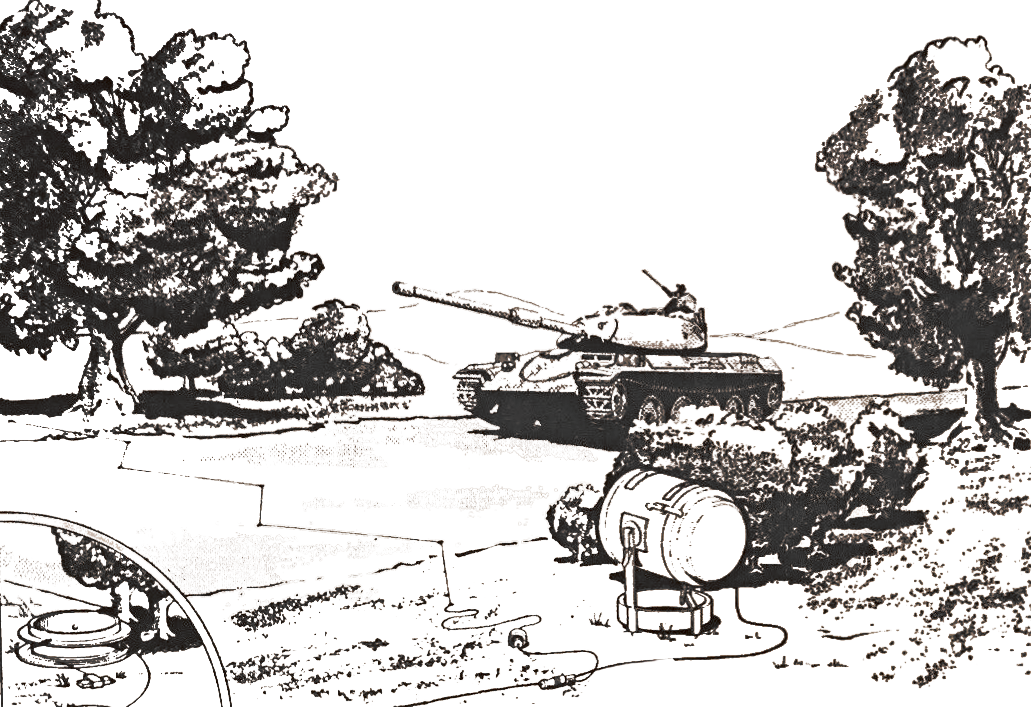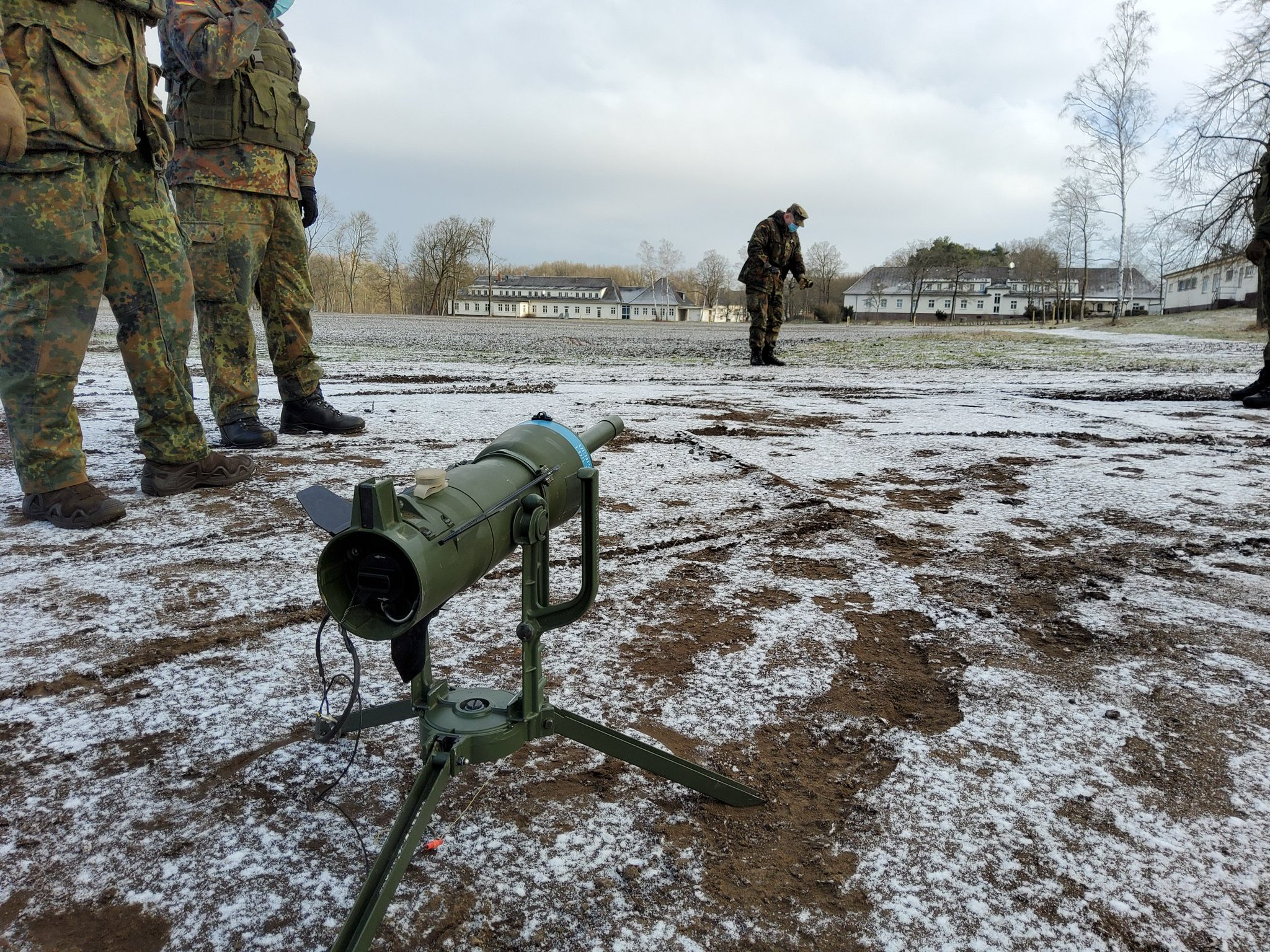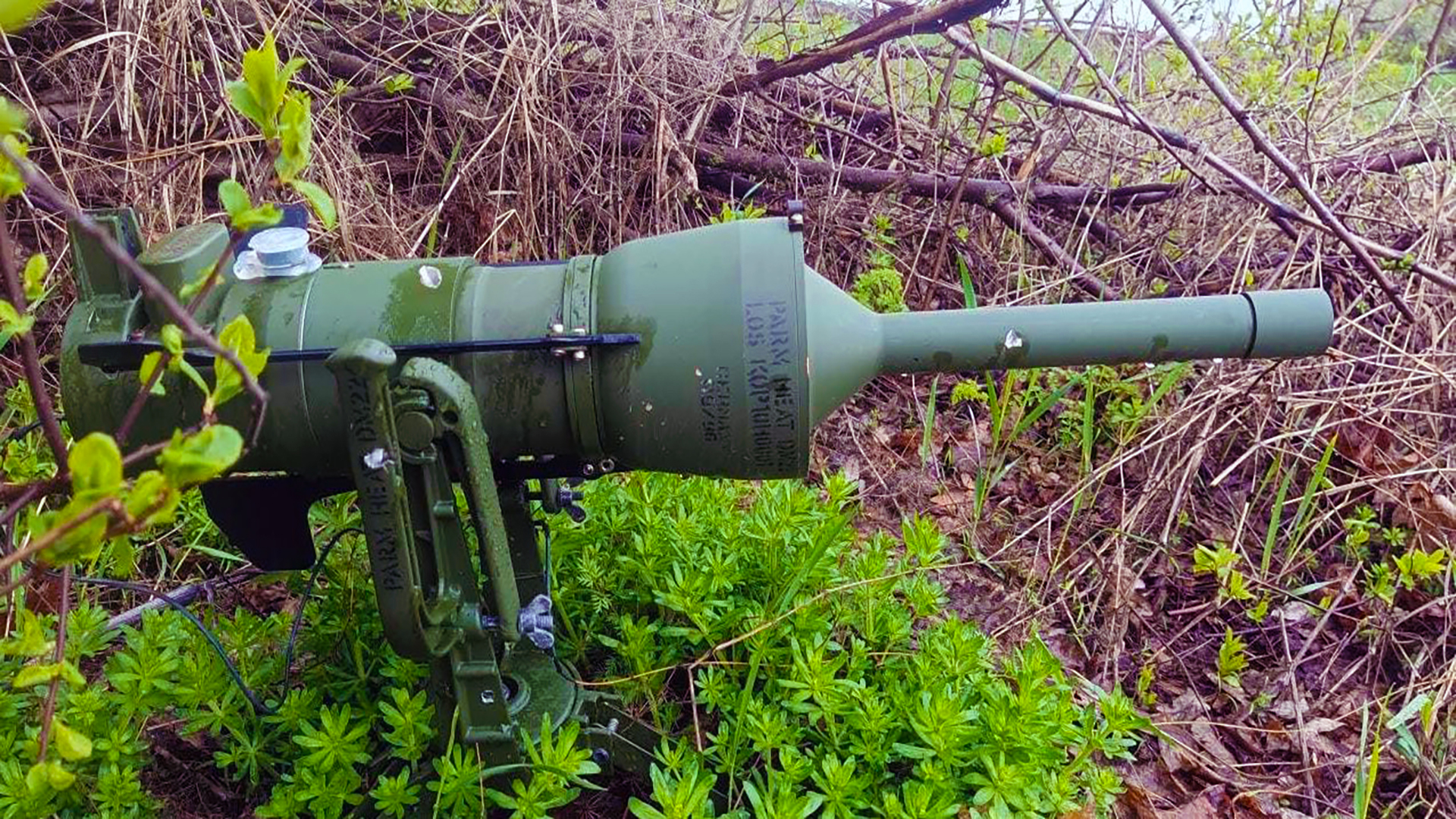The unusual DM22 mine, which is more of a remotely triggered anti-tank rocket, is among the weaponry and defense systems that Germany has sent over to Ukraine since the start of the conflict with Russia. Sightings of this kind of mine have been few and far between, and while some are reported to have fallen into Russian hands, the remaining systems will provide Ukrainian forces with a flexible anti-armor capability.
Shoulder-launched and man-portable systems have been a focal point of Ukraine’s defense against Russian tanks and other armored vehicles, but Germany’s DM22 ‘off-route’ mines have been making a more prominent appearance as of late. The DM22 Panzerabwehrrichtmine 2, or PARM 2, was part of a delivery from Germany carried out this spring that was reported to include 1,600 DM22 off-route anti-tank mines, as well as 3,000 more conventional DM31 anti-tank mines.
Off-route mines similar to the DM22 trace their origins back to the early days of the Cold War when NATO realized the staunch threat that Soviet armor posed would require innovative anti-tank weapons. The L14A1, for example, consisted of a similar design and was manufactured throughout the 1980s. Soon after, in the early 1990s, the DM22’s predecessor, the DM12, was introduced and entered service with the German Army.
The DM22 PARM 2 is a configuration of the DM12 PARM 1. The DM22 entered production in the 1990s and was manufactured by TDW, now a subsidiary of the European missile consortium MBDA. Both mines are referred to as off-route mines because of the systems’ ability to be deployed at a distance with a 43-yard long fiber optic trigger cable that, once tripped by the weight and motion of an armored vehicle, fires the projectile.

The DM22’s mine itself consists of a fin-stabilized, high-explosive, anti-tank (HEAT) warhead that is rocket-propelled and designed to engage targets from up to roughly 100 yards away, depending on the circumstances. The charge is said to be designed to penetrate armor over 100 millimeters deep and can be programmed to be active for up to 30 days. Use cases for the DM22 could include protective operations, large ambushes, and disrupting or completely halting the advancement of enemy forces.
A rear element with an arm and fuzing device makes up the other half of the DM22, and it is held together with the projectile by a barrel with a tripod, which makes it ideal for rapidly changing environments. Being that there is no requirement to bury the mine, the entire DM22 system can be easily transported and setup in a matter of minutes.

An open sight atop the rear element allows the DM22 to be aimed and positioned, and among the limited amount of data available about the system, it is shown to be deployed at a 90-degree, perpendicular angle to the target’s assumed path of movement. Once it’s tripped, the rocket fires into the side of the tank, detonating the HEAT warhead. The fiber optic cable can then be replaced with a more complex infrared sensor to extend the DM22’s triggering range.
The system has the ability to get around some of the countermeasures employed against traditional anti-armor mines while also providing a similar capability to an anti-armor rocket team, while not putting a team at risk. Ambushes can be set and left for days or even weeks, which is another advantage compared to an anti-armor team.
While there has been no confirmed footage of the DM22 system in action in Ukraine, one video shared on Twitter by Ukraine Weapons Tracker is presumed to be a recording of just that. In the clip, a Russian BMP vehicle can be seen driving down a rural road in what is reported to be Zaporizhzhia Oblast. Before the vehicle triggers the mine, a cloud of smoke can be seen off to the upper left in the wooded area near the explosion. This positioning has led many who have viewed the video to believe that a DM22 was used to carry out the attack, as it would line up with the characteristics of an off-route mine detonation, but we can’t be certain.
It is also important to note that Germany broke a long-held doctrine in order to send these DM22 off-route mines to Ukraine in what is shaping up to be a growing trend among countries that are delivering, or at least pledging to deliver, weapons and supplies. Germany’s historic split from its commitment to never send weapons to areas of conflict came on the heels of widespread criticisms claiming that the country wasn’t doing enough to help Ukraine.
However, the DM22s are among the earliest weapons that Germany delivered to Ukraine, and their position on transferring weapons to the country has significantly evolved since then. It is also important to note that Germany is a signatory to the Ottawa Convention, which prohibits the use, stockpiling, production, and transfer of anti-personnel mines. Being that the DM22 is specifically designated as an anti-tank mine, Germany can continue to produce and field them.
All in all, Ukraine’s missile arsenal is quickly becoming a reflection of global assistance efforts, some of which go against an entire country’s historical practices. Politics aside, the DM22 off-route mines are a unique capability now making appearances on the Ukrainian-Russian battlefield, and it will be interesting to see how they compete with or supplement the rest of the Ukrainian force’s anti-tank systems.
Contact the author: Emma@thewarzone.com
